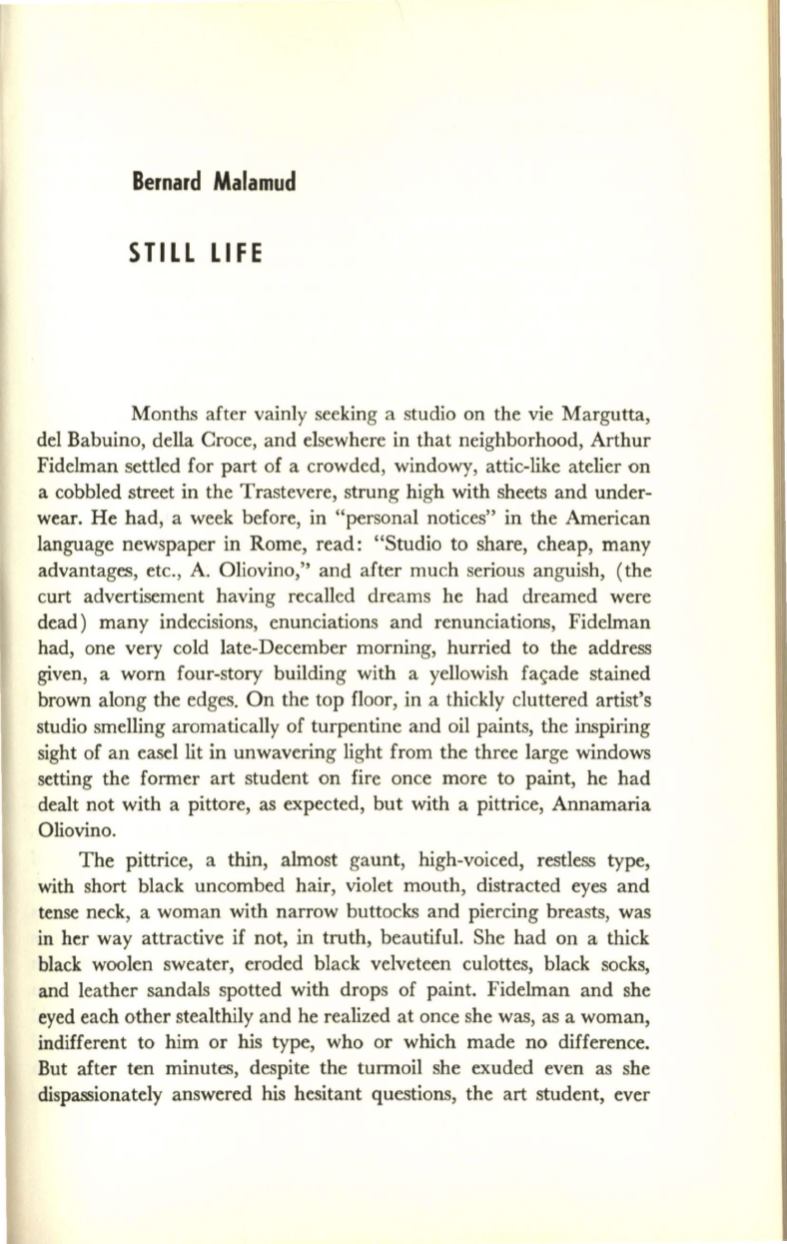
Bernard Malamud
STILL LIFE
Months after vainly seeking a studio on the vie Margutta,
del Babuino, della Croce, and elsewhere in that neighborhood, Arthur
Fidelman settled for part of a crowded, windowy, attic-like atelier on
a cobbled street in the Trastevere, strung high with sheets and under–
wear. He had, a week before, in "personal notices" in the American
language newspaper in Rome, read: "Studio to share, cheap, many
advantages, etc., A. Oliovino," and after much serious anguish, (the
curt advertisement having recalled dreams he had dreamed were
dead) many indecisions, enunciations and renunciations, Fidelman
had, one very cold late-December morning, hurried to the address
given, a worn four-story building with a yellowish fac;ade stained
brown along the edges. On the top floor, in a thickly cluttered artist's
studio smelling aromatically of turpentine and oil paints, the inspiring
sight of an easel lit in unwavering light from the three large windows
setting the former art student on fire once more to paint, he had
dealt not with a pittore, as expected, but with a pittrice, Annamaria
Oliovino.
The pittrice, a thin, almost gaunt, high-voiced, restless type,
with short black uncombed hair, violet mouth, distracted eyes and
tense neck, a woman with narrow buttocks and piercing breasts, was
in her way attractive if not, in truth, beautiful. She had on a thick
black woolen sweater, eroded black velveteen culottes, black socks,
and leather sandals spotted with drops of paint. Fidelman and she
eyed each other stealthily and he realized at once she was, as a woman,
indifferent to him or his type, who or which made no difference.
But after ten minutes, despite the turmoil she exuded even as she
dispassionately answered his hesitant questions, the art student, ever


